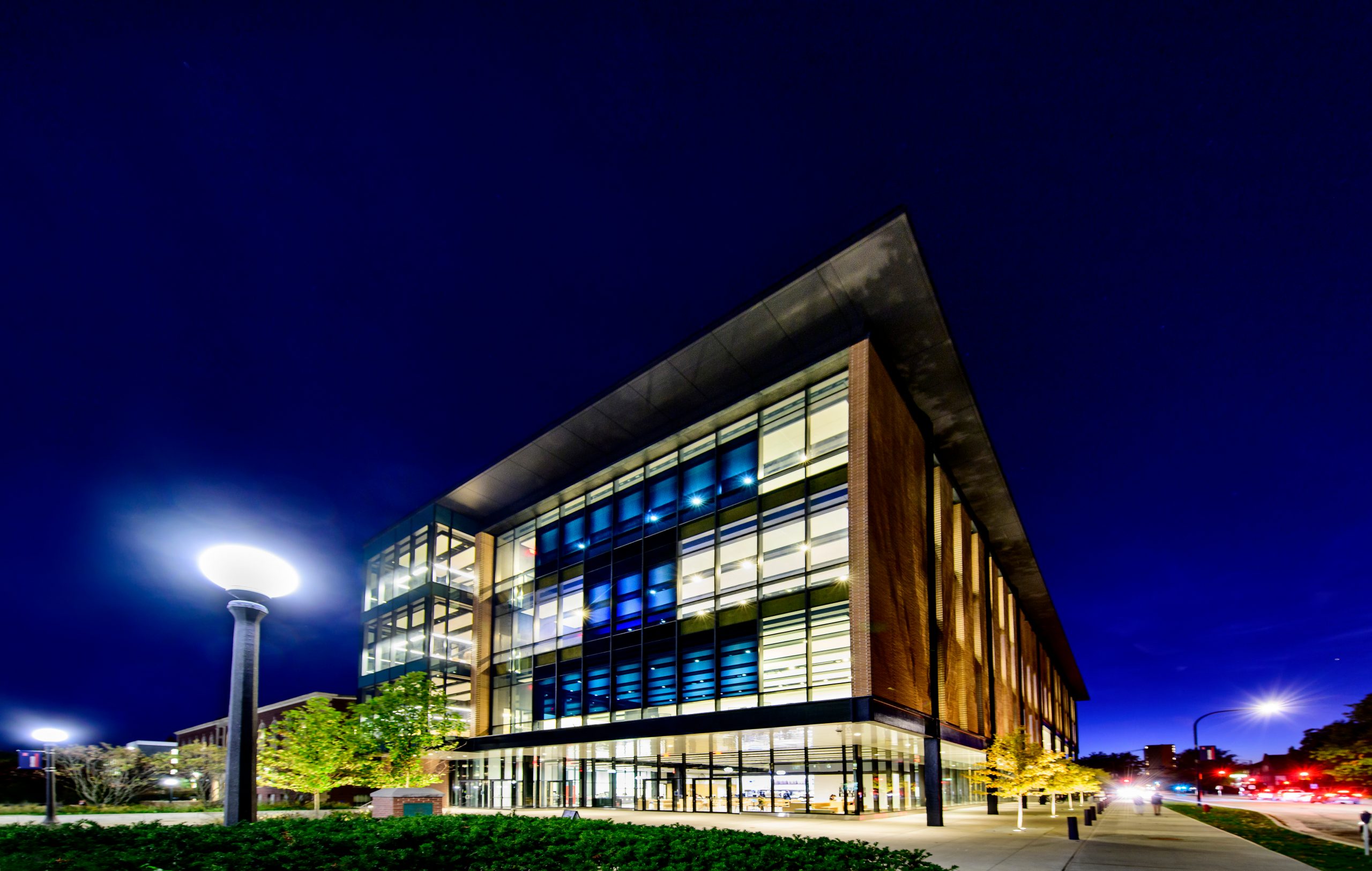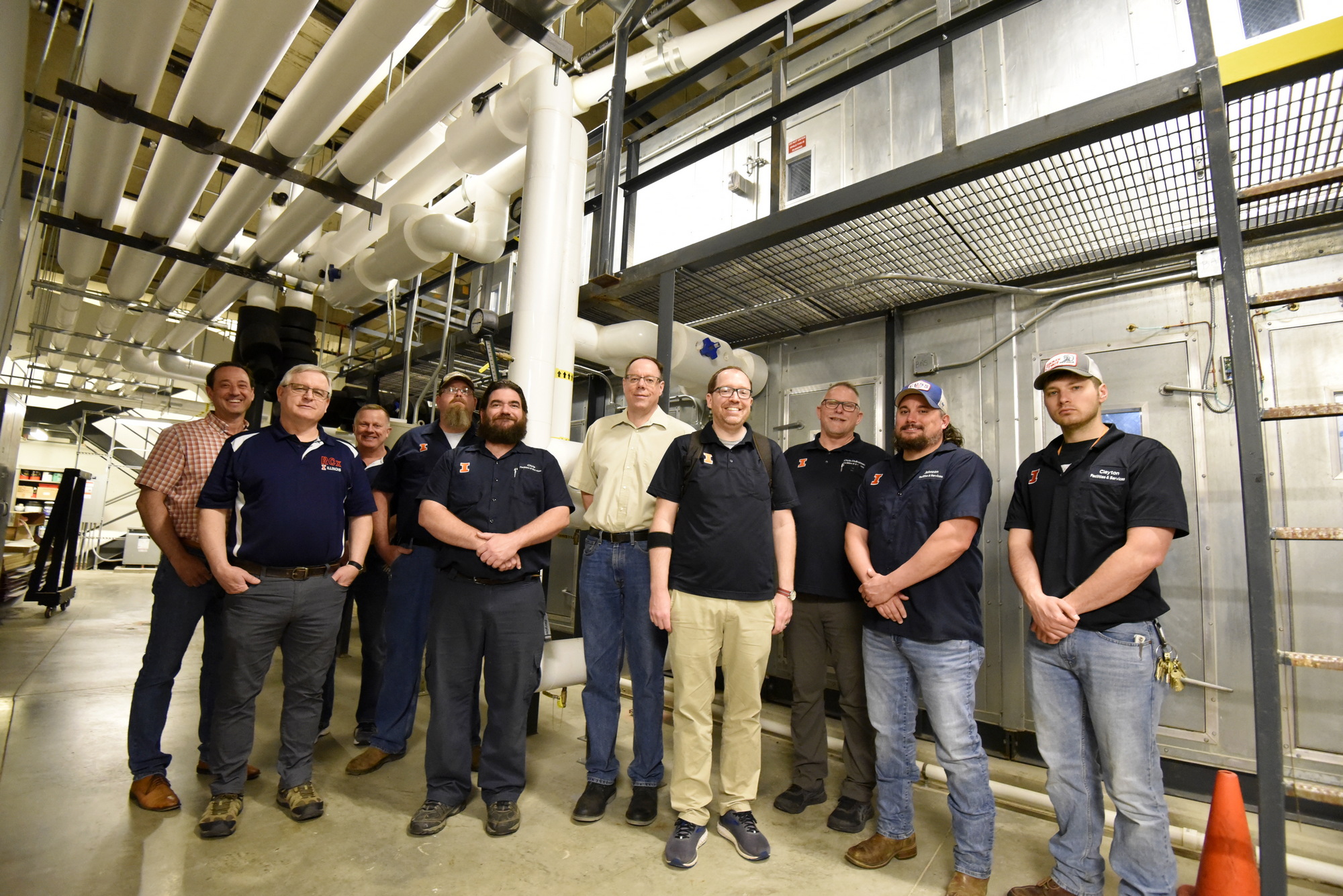Electrical Grid Response Strategies

In April 2022, the Midcontinent Independent System Operator (MISO) announced that projected electric capacity shortfalls in the organization’s north and central regions over the summer might leave those areas at increased risk of temporary, controlled outages. While Abbott Power Plant� generates approximately half of the campus’ electricity through an efficient cogeneration process, the university typically acquires the rest from Ameren as a market participant in MISO.
The elevated risk of power disruptions in the future requires Utilities & Energy Services (UES) to develop new, proactive operational strategies focused on “shedding load,” when necessary, to reduce energy consumption campuswide and limit the university’s energy demand from the grid during these periods. UES is updating operational strategies designed to meet the university’s energy needs should those situations arise, such as the following:
- Implementing new, aggressive energy conservation procedures at the facility level
- Increasing on-site energy production capacity at Abbott Power Plant
- Maximizing use of the campus Thermal Energy Storage tank and load-shifting processes
- Incorporating renewables when consistent output exists
- Optimizing building digital control systems
- Performing urgent contingency planning as necessary
Event Day Action Plans (Units)
UES is collaborating with academic and administrative units to help to identify lower priority facility areas and items that would be able to be immediately shut down without concern or detriment to research, educational, or engagement activities. UES has created an Event Day Action Plan form, available on this page under “Documents,” to ensure these energy demand reductions are executed in a safe manner when an outage notification is received from MISO and Ameren. Reduction strategies (for lighting, computers and electronic equipment, motors, and general items) should take into account the critical aspects during this type of emergency:
- Defining building spaces, equipment, and systems that could be reduced or scheduled off with extremely short notice
- Specifying the “must-have” locations, energy loads, and capacity requirements to maintain essential operations and equipment
- Identifying what building spaces and equipment are critical, what feeder or branch circuit the equipment is connected to, and if current backup generation is available to maintain operations
- Verifying equipment load and the capacity necessary to keep it running
Electrical Energy Curtailment Plan (F&S)
When necessary, UES will initiate and implement campuswide electrical energy load curtailment through five stages. The plan aims to treat all stakeholders fairly and equitably, minimize adverse impacts from curtailment, comply with existing state laws and regulations, and provide for smooth, efficient, and effective utilities operations during these periods.
| Curtailment Phases | |||
| Stage | Curtailment Nature | Type or Percent | Curtailment |
| 1 | Voluntary | N/A | Uniform among all U. of I. Consumers |
| 2 | Voluntary | 5%+ | Uniform among all U. of I. Consumers |
| 3 | Mandatory | 5% to 15% | Uniform among all U. of I. Consumers |
| 4 | Mandatory | 15%+ | Uniform among all U. of I. Consumers |
| 5 | Mandatory | Stage 4 Percent Plus Possible Feeder Building Isolations | Uniform among all U. of I. Consumers plus F&S actions including forced feeder and building isolations and possible blackouts. |
Stage 1:
Begin (or continue if communication has already begun) providing curtailment information to the campus community.
Stage 2:
a) Notify the campus community of the percentage level of voluntary curtailment; (b) provide curtailment information to the campus community; (c) answer consumer questions about curtailment; (d) provide curtailment reports; and (e) provide updated information from Stage 1.
Stage 3:
(a) Notify the campus community of the percentage level of mandatory curtailment; (b) calculate weather-normalized base billing period data and curtailment targets for the campus community (c) provide curtailment targets to all units, colleges, and departments that request such data; (d) provide the campus community with information about how to notify F&S of essential service requirements.
Stage 4:
Notify the campus community of any applicable changes in mandatory curtailment.
Stage 5:
Collaborate with stakeholders to develop and implement the most effective methods for securing the required load curtailment and to minimizing the effects of the last stage of load curtailment, which is feeder and building isolations.
Documents

